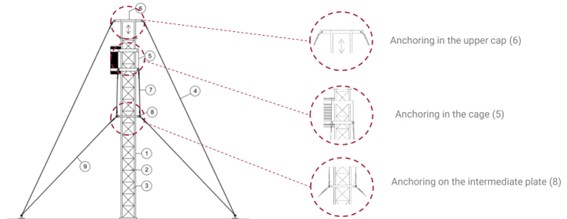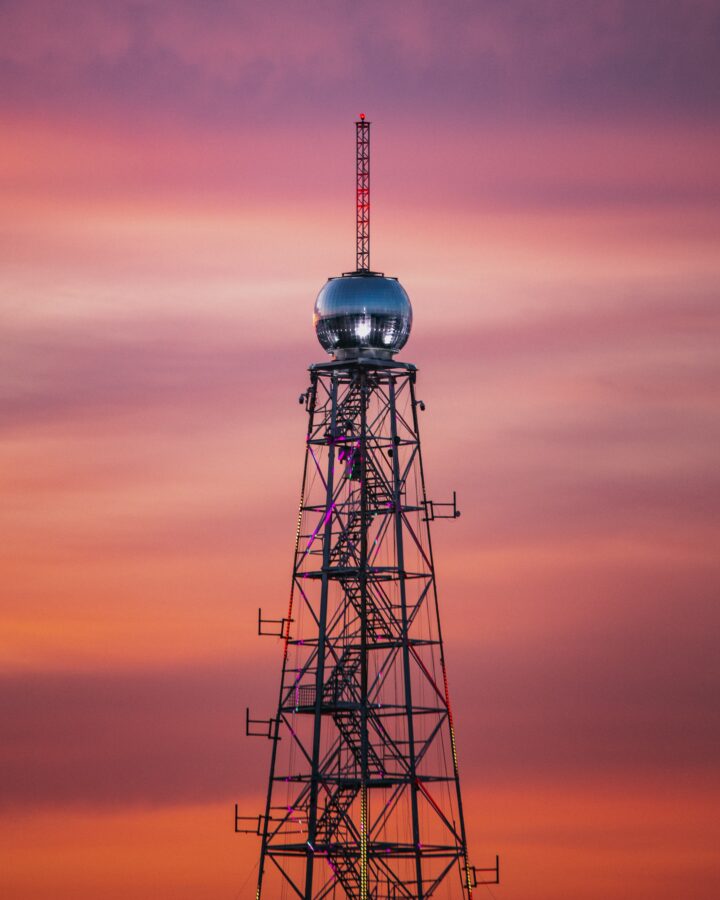Telecommunication towers are subject to continuous maintenance, so work operators have to ascent them. These towers have mobile cages that allow operators to climb up for repairs and maintenance. The problem is that when it is windy these cages must be lowered, as they could break and damage the structure due to strong gusts of wind. This is a problem, especially in windy areas, because when the weather conditions are not good the cage has to be down. In order to solve this problem, researchers from the University of Huelva have developed a new bracing system to keep the cages on top of the tower, even when it is windy, allowing maintenance work to be carried out whenever it is required. This new bracing system can be installed on towers to optimize and facilitate repair work.
The bracing system consists of a simplified form of a double set of steel cables that are raised and tensioned at the same time as the cage in which the radiating elements are placed. These two groups of cables are linked by means of an intermediate element as an anchorage which has been called the “plate”. In this way, it is not necessary for any operator to climb the tower to install the cable-stayed system.

Structural calculations have been performed to ensure the correct functioning of the developed system. Furthermore, the design of this technology has followed the European directives on design and safety (Directive 98/37/EC), Directive 2001/95/EC on General Product Safety, R.D. 614/2001 on Occupational Risk Prevention and R.D. 2177/2004 on work equipment.
Benefits:
- The bracing system avoids the need to lower the cage due to weather conditions, so it can be used for repair and maintenance works of the antenna system.
- The new system allows working with cages in towers with more than 12 meters.
- The solution with the cap offers a structural advantage, if the top suspenders are attached to the cage, the motor cable would pull on this cable, whereas if it is attached to the cap, it would transmit the stresses directly to the tower, thus eliminating part of the tension of the lifting cable.
The represented institution is looking for a collaboration that leads to commercial exploitation of the presented invention.
Institution: Universidad de Huelva (UHU).
TRL: 3-4
Protection status: Patent Application
Contact: Marta Quintana / tech@viromii.com

